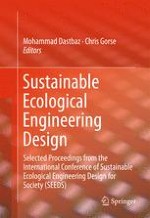2016 | OriginalPaper | Buchkapitel
5. An Evaluation of Thermal and Lighting Performance Within an ETFE Structure
verfasst von : Benjamin A. J. Martin, Dawa Masih, Benson Lau, Paolo Beccarelli, John Chilton
Erschienen in: Sustainable Ecological Engineering Design
Aktivieren Sie unsere intelligente Suche, um passende Fachinhalte oder Patente zu finden.
Wählen Sie Textabschnitte aus um mit Künstlicher Intelligenz passenden Patente zu finden. powered by
Markieren Sie Textabschnitte, um KI-gestützt weitere passende Inhalte zu finden. powered by
